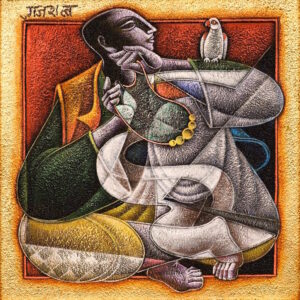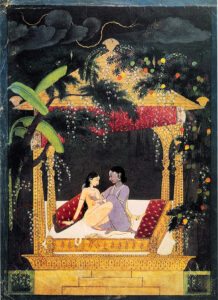Art Tourism – A journey through Indian history
India is one of the richest countries in the world in terms of its cultural heritage, with a myriad of religions, languages, and traditions that have resulted in a diverse array of artistic endeavours, from sculptures and temples to modern contemporary paintings and handicrafts. From the earliest paintings ever found in India, which were animal and human figures scratched onto the Bhimbetka caves in Madhya Pradesh, to 21st century Indian artists who have been celebrated globally like Satish Gujral and Nasreen Muhamadi, India has a plethora of schools of paintings that are displayed in galleries and museums across the country, as well as a diverse offering of regional crafts tours.
Private art galleries have been established in India since the 1900s, providing a platform where Indian modernists and contemporary artists could sell their paintings to buyers. Museums also let art lovers experience centuries of history and culture through different mediums. Countries have been endorsing art tourism as a way for tourists to appreciate art of different regions, curated specially for gallery owners, artists, collectors, museum curators and art students.
Often, these artists also travel around the world to seek ideas and inspirations for creating new art. Globally, the West, especially countries in Europe and America, is famous for such attractions, such the Louvre in Paris, the Metropolitan Museum of Art in New York, and the Van Gogh museum in Amsterdam. Some tour companies also have tours specially designed for such tourists to travel to locations with unique pieces, explore and engage related to art, such as galleries, museum tours, and even festivals and cuisine events. Although the official concept of art tourism might not be so widespread in India yet, the country boasts a number of masterpieces that are globally recognised.
Here is a list of some of the most unique art galleries and art museums in India that feature world-famous Indian artists and works of art that continue to inspire artists today.
Government Museum, Chennai

A South-Indian Tanjore painting
The Government Museum in Chennai, also known as the Madras Museum, was established in 1851. It is the third-largest museum in the world and houses the National Art Gallery that underwent an extensive renovation with a budget of INR 110 million in 2019. It is known for containing rare works of Raja Ravi Varma, who is considered one of the greatest painters in the history of Indian Art. Varma’s works were a brilliant fusion of European academic art and Indian iconography, and he was awarded the Kaisar-i-Hind Gold Medal in 1904 by the British king emperor for his contribution to the arts and public interest in India.
One of the gallery’s most unique displays is its collection of Tanjore paintings, which are a classical South Indian painting style primarily religious in its inspiration, originating from the town of Thanjavur in Tamil Nadu. Usually done on wooden planks, the painting style is known for its rich and vivid colours, glittering gold foil work overlaid on gesso work and the incorporation of glass beads and semi-precious gems. Collections of Tanjore paintings are also housed in the British and Victoria & Albert museums in England and in the National Museum of Copenhagen, so the Government Museum is a great place for art-loving locals to see one of India’s artistic gems.
The National Gallery of Modern Art, New Delhi
Another government initiative, the National Gallery of Modern Art was started in 1954 and has over 14,000 paintings both by foreign and Indian artists such as Raja Ravi Varma and the Tagore brothers. Of the Western and Far Eastern artists, NGMA has paintings by those who visited India in the 18th and 19th centuries and depicted portraits and exotic Indian scenes in their art, including William Hodges and Emily Eden.
NGMA was established particularly to promote more modern contemporary art from the 19thcentury onwards. One of the regional painting schools it features is Kalighat painting, which originated in the then-British-Indian capital of India, Calcutta. Artisan communities used mill-made paper and ink to illustrate romantic drawings of women or satirical paintings of the newly rich, among others. The way these paintings captured the essence of people’s daily lives made it a unique style which even today influences notable artists like Jamini Roy, whose collection is featured in NGMA.
Jehangir Art Gallery, Mumbai

A Satish Gujral creation
The Jehangir Art Gallery is a private gallery in Mumbai, which was established in 1952. It houses some of the finest art creations in the world and boasts paintings from famous Indian artists such as Jamini Roy and Arpita Singh. These artists have made a name for themselves globally and artists all over India line up for opportunities to display their work at Jehangir.
For example, Satish Gujral, who held several exhibitions at Jehangir, was one of the few Indian artists with paintings featured in the prestigious Museum of Modern Art (MoMA) in New York. Gujral was one of the most experimental artists in the history of modern Indian art and was awarded the Padma Vibhushan in 1998, as well as international honours like Belgium’s Order of the Crown for Architecture. Thus, galleries like these provide excellent opportunities for Indians to see world-renowned artists in their own neighbourhood.
The Government Museum and Art Gallery, Chandigarh
The Chandigarh art gallery was founded in 1968 due to the partition of India in 1947. Prior to the partition, the extensive collection of paintings and sculptures belonged to the museum in Lahore but after independence, it was shared between India and Pakistan.
The art gallery holds paintings from prominent artists such as Amrita Sher-Gil and Rabindranath Tagore. Notably, the museum also has several Gandhara sculptures: different forms of Buddha, often uniquely portrayed in a beautiful, Greek-god-like form due to the Indo-Greek influence of the era.
National Museum, New Delhi

The iconic Krishna and Radha in a Pavillion Pahari painting
The National Museum in Delhi was established in 1949 and is especially prominent for displaying the largest collection of miniature paintings in the country, ranging from the time periods of 10th to 20th century. The museum contains around 17,000 paintings, which represent important styles of Indian miniatures, such as Deccani (South India), Mughal (Central and North India), Rajasthani and Pahari. The collection also includes a diverse array of murals, cloth and wood paintings.
Originating from the Himalayan hill kingdoms of North India, Pahari painting is one of the most illustrious and lyrically beautiful schools of paintings in Indian art history. They usually capture stories of Mughals, Rajput kings and deities. The most famous Pahari painting called Krishna and Radha in a Pavillion depicts the lovers beneath a jeweled pavilion in a lavish garden of ripe mangoes and flowering shrubs, while the sky fleetingly lights up with a lightning flash – a technique customarily used in Pahari miniatures to signify pleasure and excitement; the original can only be seen by art lovers at the National Museum.










